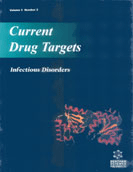Abstract
Glutathione transferases (GSTs) are enzymes involved in cellular detoxification by catalysing the nucleophilic attack of glutathione (GSH) on the electrophilic centre of a number of electrophilic compounds of both endogenous and exogenous origins. This conjugation reaction usually makes the electrophilic substrates more water soluble and, thereby, facilitates their excretion from the body. Determination of metabolic properties of a new chemical entity (NCE) is one of the most important steps during the drug discovery and development process. Nowadays, in vitro methods are used for early estimation and prediction of in vivo metabolism of NCEs. In this review detailed descriptions are given of several biotransformation reactions catalyzed by GSTs that can be used at very early phases of drug development, thereby enabling unsuitable candidates to be eliminated from consideration much earlier in the drug discovery process. Knowledge of the structure-function relationships in classes of compounds that are substrates for GSTs enables the design of molecules that can be stable, or labile which has potential applications in drug and prodrug design.






















